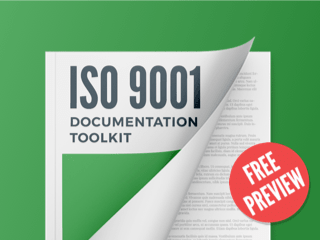ISO 9001 non-conformities
How about if we encounter power interruption and due to that we have product non-conformities. Is it allowed to say "Beyond our control" in corrective action or putting "N/A"?
Assign topic to the user
I’m afraid your question is a symptom of a common mistake in quality management systems while treating product or service non-conformities.
When treating product or service non-conformities you must, it is mandatory, to eliminate the non-conformity (correction) and treat its consequences. And the timer is ticking, you should do that as fast as possible to prevent unintended use:
Once eliminated the non-conformity you should evaluate your current practices. That is why I recommend using the SDCA cycle from Shoji Shiba.
You have a standard (S) way of doing things, written or unwritten, it is the way your organization works. You do the work (D) according to the standard and you check (C) the results. And you detect non-conformities. And you treat the non-conformities. After treating the non-conformities, the urgency stops, and you think about your standard way of doing things:
You ask should we improve, or should we keep the current standard? If your organization decides that can live with the current performance there is no need for corrective action, you continue in the SDCA cycle. If, when you ask if the improvement is needed, you realize that it is a systematic failure, there is a trend or a serious situation, you are concluding that the situation calls for improvement. That means, you can no longer trust your current standard, you must jump into the PDCA cycle to develop corrective action, an action to eliminate the cause(s) of the non-conformity.
If your organization considers that the situation is “beyond our control” you are concluding that no corrective action is needed. However, I would prefer writing “No corrective action needed” instead of “beyond our control”. I worked as a quality manager in a manufacturing plant more than 25 years ago and we had problems with power failure, we picked the priority machines and established an emergency supply operation with diesel generators.
Please search for the "Deming funnel tampering" about the problem of tampering with a system, when one tries to improve a system after each non-conformity.
You can find more information below:
- Free webinar on-demand - Measurement, analysis, and improvement according to ISO 9001:2015 - https://advisera.com/9001academy/webinar/measurement-analysis-and-improvement-according-to-iso-9001-2015-free-webinar/
- How to use root cause analysis to support corrective actions in your QMS - https://advisera.com/9001academy/blog/2016/03/01/how-to-use-root-cause-analysis-to-support-corrective-actions-in-your-qms/
- Free online training ISO 9001:2015 Foundations Course – https://advisera.com/training/iso-9001-foundations-course/
- Book – Discover ISO 9001:2015 Through Practical Examples – https://advisera.com/books/discover-iso-9001-2015-through-practical-examples/
Comment as guest or Sign in
Mar 22, 2021




